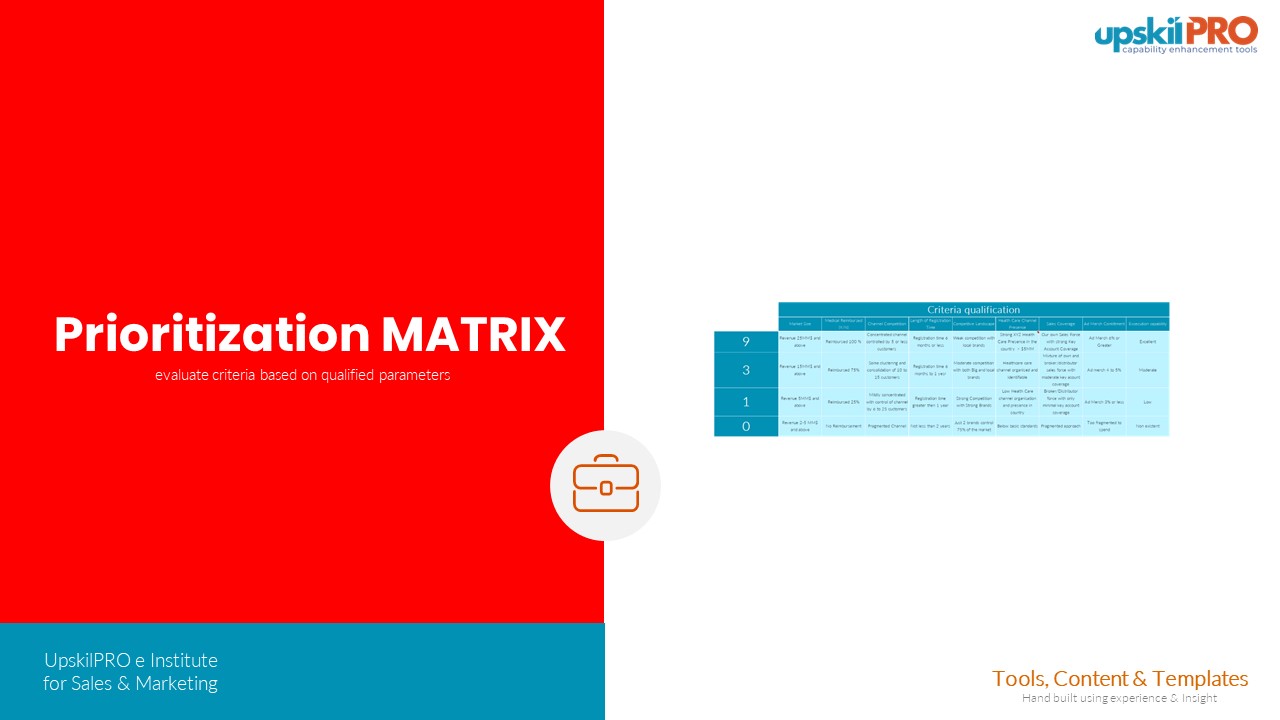Prioritization Matrix Tool
$0.00
Template Type:
- Business Reviews
- Business Intelligence
- Strategic Analysis
Categories:
- Strategic Tool
License:
User License Agreement
Reference Number:
6000-6017
Description:
A prioritization matrix, also known as a decision matrix or grid, is a tool used to systematically evaluate and prioritize a set of options or criteria based on certain factors or attributes. It helps individuals or teams make informed decisions by quantifying and comparing different options. The matrix typically involves listing options or criteria, assigning weights to each based on their importance, and then scoring each option against the criteria. The result is a visual representation that highlights the relative importance of each option or criteria.
Here are the key components of a prioritization matrix:
- List of Options or Criteria: Identify and list the various options or criteria that need to be evaluated.
- Weighting: Assign weights to each option or criterion based on its relative importance. The weights reflect the impact or priority of each element in the decision-making process.
- Scoring: Develop a scoring system to assess each option against each criterion. This could be a numerical scale or a set of qualitative descriptors.
- Calculation:Multiply the scores by the assigned weights to calculate a total score for each option. This provides a quantitative measure of the overall performance of each option.
- Visual Representation:Present the results in a matrix format, often using a table or grid. This allows for a clear visual comparison of the options and their scores.
- Decision Making:Use the prioritization matrix to facilitate decision-making. The option with the highest total score is generally considered the most favorable or prioritized.
The prioritization matrix is a versatile tool and can be applied in various contexts, such as project selection, vendor evaluation, product development, risk management, and more. It offers a structured and transparent approach to decision-making, particularly when there are multiple factors to consider and when subjective judgments need to be made.



